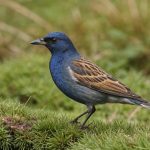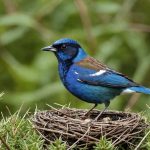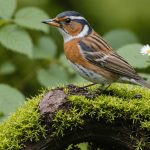Understanding the Importance of Wildlife-Friendly Gardens
Creating a wildlife-friendly garden is one of the most effective ways to support local ecosystems. By carefully designing gardens to attract and sustain wildlife, you can significantly contribute to maintaining and enhancing biodiversity. These gardens serve as essential havens, offering food, shelter, and breeding grounds for various animals and plants.
What role do gardens play in supporting local wildlife? Gardens provide critical resources for wildlife that may be scarce in more urbanised settings. By incorporating native plants, water features, and habitats like log piles, gardens can become bustling hubs for birds and small mammals. These creatures, in turn, help control pests and promote plant pollination, demonstrating the interconnectedness within an ecosystem.
Cela peut vous intéresser : Essential Tips for UK Birdwatchers: Safeguarding Rare Species During the Nesting Season
The benefits of attracting birds and small mammals are profound. Birds can play a part in seed dispersal, ensuring plant regeneration. Meanwhile, small mammals like hedgehogs can help keep insect populations in check. Such activities enhance ecosystem health by ensuring natural processes remain balanced.
In summary, fostering a garden that’s friendly to wildlife isn’t just advantageous for individual species; it’s a critical step toward sustaining a healthy and diverse ecosystem. By supporting biodiversity, you ensure a thriving, resilient environment that benefits nature and your community.
A lire aussi : Your Complete Guide to Reporting Rare Bird Sightings in the UK: Essential Tips and Guidelines
Choosing the Right Plants for Birds and Small Mammals
Creating a haven for wildlife starts with choosing the right plants. Native plants are perfect because they are adapted to the local climate and soil, making them low maintenance while providing ideal food and shelter. These plants support ecosystems by attracting native birds and small mammals naturally and sustainably.
Best Native Plants for Attracting Birds
Bird-friendly plants offer multiple benefits. Consider planting berry-producing shrubs like elderberry and serviceberry. These not only provide a food source but also shelter for many bird species. Adding nectar-rich flowers, such as columbine and bee balm, attracts hummingbirds and other nectar-loving birds. Seasonal plantings ensure a continuous supply of food throughout the year.
Recommended Shrubs for Small Mammal Habitats
For small mammal habitats, incorporate shrubs like hazelnut and snowberry. These offer dense cover and nuts for food. The structure and foliage are beneficial during colder months for protection. Selecting the right shrubs nurtures a thriving small mammal population.
Seasonal Planting Considerations
Timing is crucial for maximizing wildlife benefit. Plan your planting to allow native plants to become established before peak wildlife activity. Incorporating nectar-rich flowers in spring ensures an early start to attracting wildlife, while berry-producing shrubs should be set by autumn to offer fall nourishment. Such planning revives habitats year-round.
Creating Habitats and Shelter for Wildlife
Incorporating wildlife habitats into your garden design not only enhances its beauty but also supports the local ecosystem. Designing shelter spaces like hedgerows and brush piles provides critical coverage for small animals, offering safety from predators and harsh weather conditions. These shelter options can be created by layering branches, leaves, and twigs which mimic natural shelters found in the wild.
Adding water sources, such as ponds and bird baths, is crucial for supporting wildlife. A pond not only quenches the thirst of various creatures but also attracts amphibians like frogs and newts. Meanwhile, bird baths offer birds a space to drink and bathe, particularly benefiting them in dry seasons.
Native trees and shrubs are essential components of any wildlife habitat. They serve as natural shelters, fostering a microhabitat for birds, insects, and small mammals. These plants often require less maintenance and are better adapted to local climate conditions, making them a sustainable choice for your garden design. By focusing on these elements, your garden can become a thriving sanctuary, inviting diverse wildlife to flourish.
Sustainable Gardening Practices
Embracing sustainable gardening involves implementing organic methods and fostering a balanced ecosystem. By prioritising chemical-free gardening, gardeners can create thriving environments that support diverse plant and insect life without harmful impacts on the ecosystem.
Composting and Soil Health
Composting is a key practice to enhance soil health naturally. Organic waste, such as kitchen scraps and yard waste, can be transformed into nutrient-rich compost. This adds organic matter to the soil, improving its structure and fertility while eliminating the need for chemical fertilisers. Maintaining healthy soil is fundamental in sustainable gardening.
Natural Pest Control Methods
Natural pest control avoids the pitfalls of pesticides by utilising ecological interactions. Companion planting, where certain plant species are grown together, can deter pests while attracting beneficial insects. Additionally, homemade sprays with ingredients like garlic or neem oil can offer effective, non-toxic solutions.
Encouraging Beneficial Insects
Creating an inviting habitat for beneficial insects is crucial. Pollinators like bees and butterflies, and predators like ladybugs and lacewings, contribute to a balanced garden. Plant diverse, nectar-rich flowers and install insect hotels to attract these allies. These practices enhance sustainable gardening by reducing reliance on chemical pest controls.
Maintenance and Seasonal Care for a Wildlife-Friendly Garden
Creating a wildlife-friendly garden requires thoughtful garden maintenance and attentive seasonal adjustments. It’s vital to follow best practices for seasonal garden cleanup to ensure your garden remains a haven for local wildlife.
During seasonal cleanup, remove debris that could harbour pests while keeping some leaf litter to provide habitat for beneficial insects. Pruning overgrown plants towards the end of their lifecycle can stimulate healthy growth and ensure continued shelter for garden visitors. Monitoring plant health is another essential aspect, as healthy plants attract and sustain more wildlife.
Seasonal care tips recommend being observant of wildlife interactions. This includes noting which plants attract the most visitors and understanding the needs of those species during specific times of the year. Anomalies in plant health could indicate harmful wildlife interactions that might need intervention.
Adjust garden elements such as water features and plant placements based on seasonal weather patterns. For instance, moving sensitive plants to sheltered areas during colder months can protect them from harsh conditions. By tailoring garden maintenance to seasonal changes, you’ll foster a thriving ecosystem that supports both flora and fauna throughout the year.
Incorporating Features that Attract Specific Wildlife
Creating an inviting environment for wildlife involves integrating specific features into your outdoor spaces.
Types of Bird Feeders and Seed Choices
Bird feeders are an excellent addition, with a variety of designs catering to different species. Tube feeders are ideal for small perching birds; they often hold seeds like sunflower hearts, popular among finches and chickadees. Platform feeders offer a versatile option, suitable for larger birds such as robins and jays, as they can accommodate various seed types including mixed seeds and peanuts.
Nesting Boxes for Birds and Small Mammals
Nesting boxes provide necessary shelter and breeding sites. When choosing designs, consider species-specific requirements. For example, wrens prefer boxes with a small entrance hole, while larger birds like owls need more spacious configurations. For mammals, simple wooden boxes placed in quiet, sheltered areas can attract creatures like bats.
Additional Attractions for Wildlife
Position feeders near natural cover to ensure wildlife feels safe. Balance aesthetic elements by adding wildlife-friendly garden art, blending beauty with functionality. Remember, the right nesting box design not only looks appealing but also offers security and comfort, encouraging repeat visits from your wild guests.
Case Studies or Personal Experiences
Delving into wildlife gardening experiences, enthusiasts often share touching personal anecdotes where simple changes attract specific wildlife to their gardens. One gardener shared how planting native wildflowers and leaving water out successfully attracted bees and butterflies, enhancing pollination and biodiversity. She noted the sense of accomplishment and serenity from observing these vibrant visitors.
Successful garden designs are another focal point in these success stories. One approach highlighted the importance of creating layered habitats by using a combination of shrubs, trees, and flowers. A family’s garden became an example of how diversity in plant selection supports a wider range of species, from birds to hedgehogs.
Community involvement has also played a significant role in wildlife gardening initiatives. In one town, neighbours collaborated to create a continuous habitat through their backyards, forming a vital corridor for local wildlife. This collective effort not only increased biodiversity but also fostered a tight-knit community bonded by a shared commitment to preserving the environment.
These experiences and case studies underscore the transformative impact of mindful gardening on both ecosystems and human communities, encouraging others to embark on their own wildlife gardening journey.
Visual Aids for Wildlife-Friendly Gardening
Utilising visual aids such as garden visuals, diagrams, and photographic guides is instrumental in designing and maintaining a wildlife-friendly garden. These resources not only enhance understanding but also provide inspiration and guidance for garden enthusiasts.
Illustrative Diagrams for Garden Layouts
Garden visuals and diagrams are invaluable in planning effective garden layouts. By illustrating the placement of plants, water features, and other elements, diagrams help gardeners design their spaces to maximise habitability for wildlife. They offer clear, structured plans that can be adapted to various garden sizes and functions, ensuring that every aspect of the space contributes positively to local ecosystems.
Photographic Examples of Wildlife-Friendly Plants
Photographic guides showcase real-life examples of wildlife-friendly plants, aiding gardeners in selecting the right species for their plot. These images highlight plant characteristics, such as flower structures and seasonal variations, which are crucial for attracting specific wildlife. By studying these guides, gardeners can make informed decisions on which plants will thrive in their environment and support local fauna.
Before-and-After Success Stories
Before-and-after success stories provide inspiration and reveal the tangible benefits of wildlife-friendly gardening. These stories document the transformation of gardens and illustrate real-life impacts on local wildlife populations. By showcasing these narratives, gardeners can see the potential effects of their efforts, motivating them to create spaces that are not only beautiful but also beneficial for wildlife.











